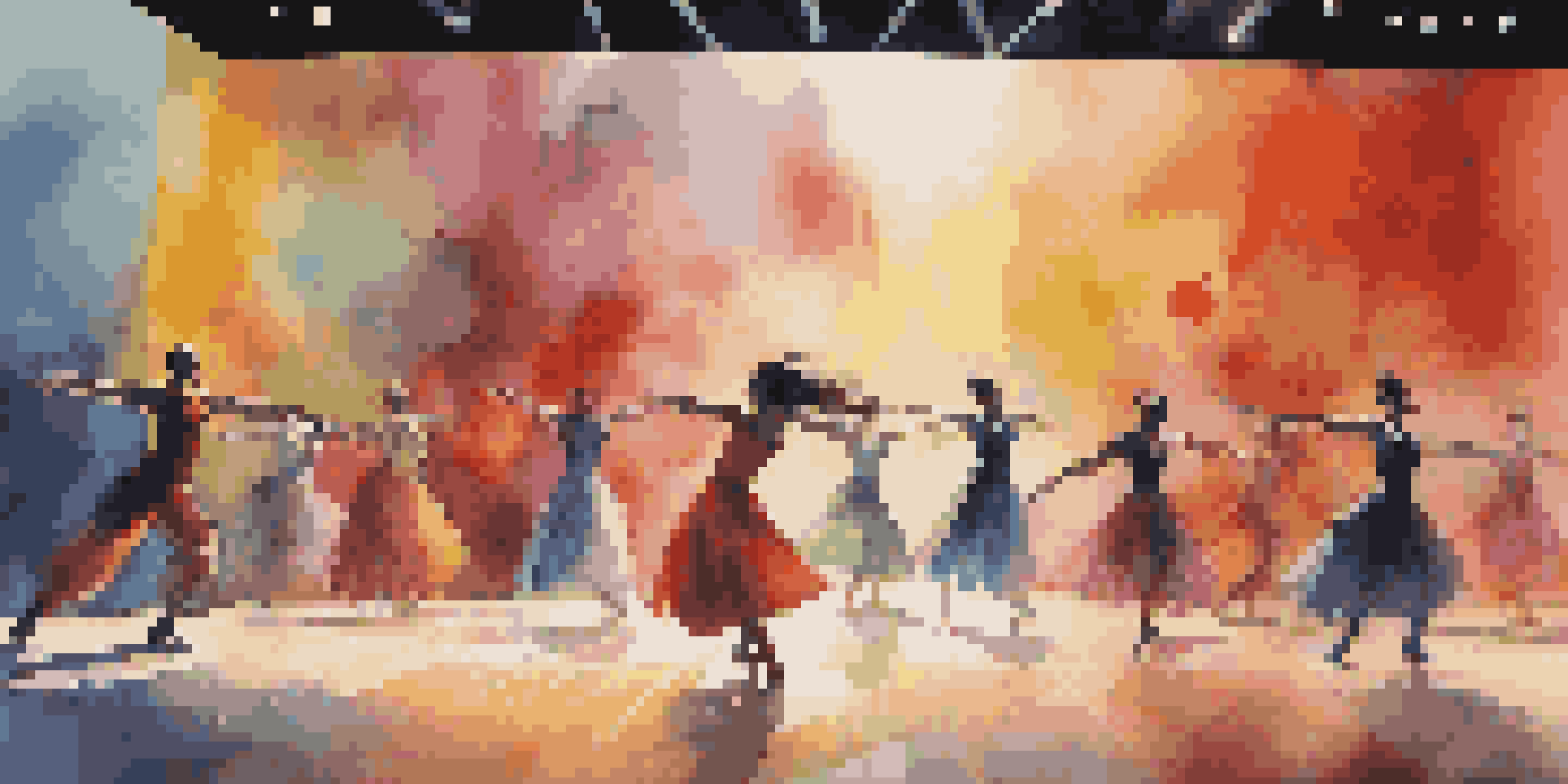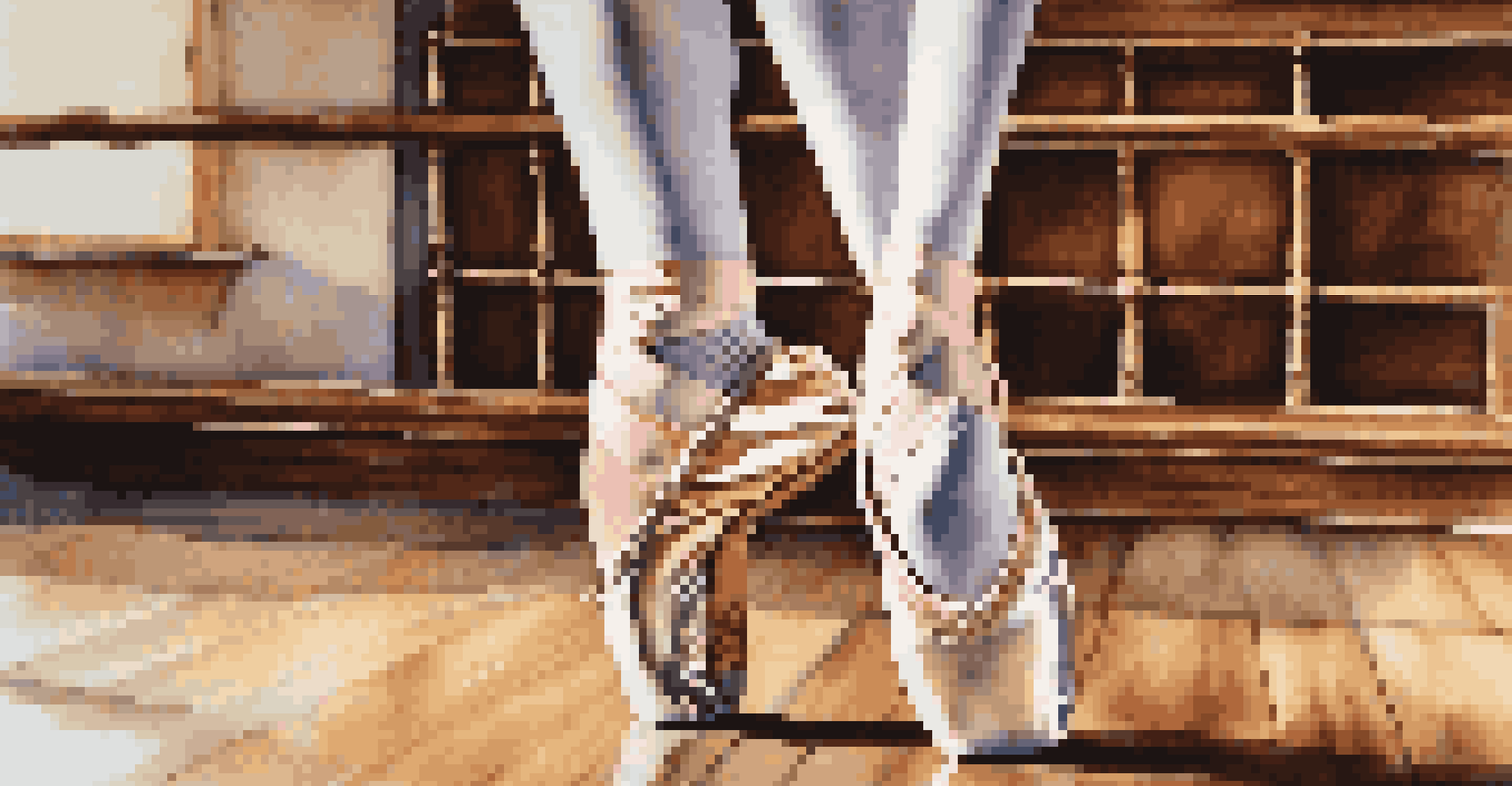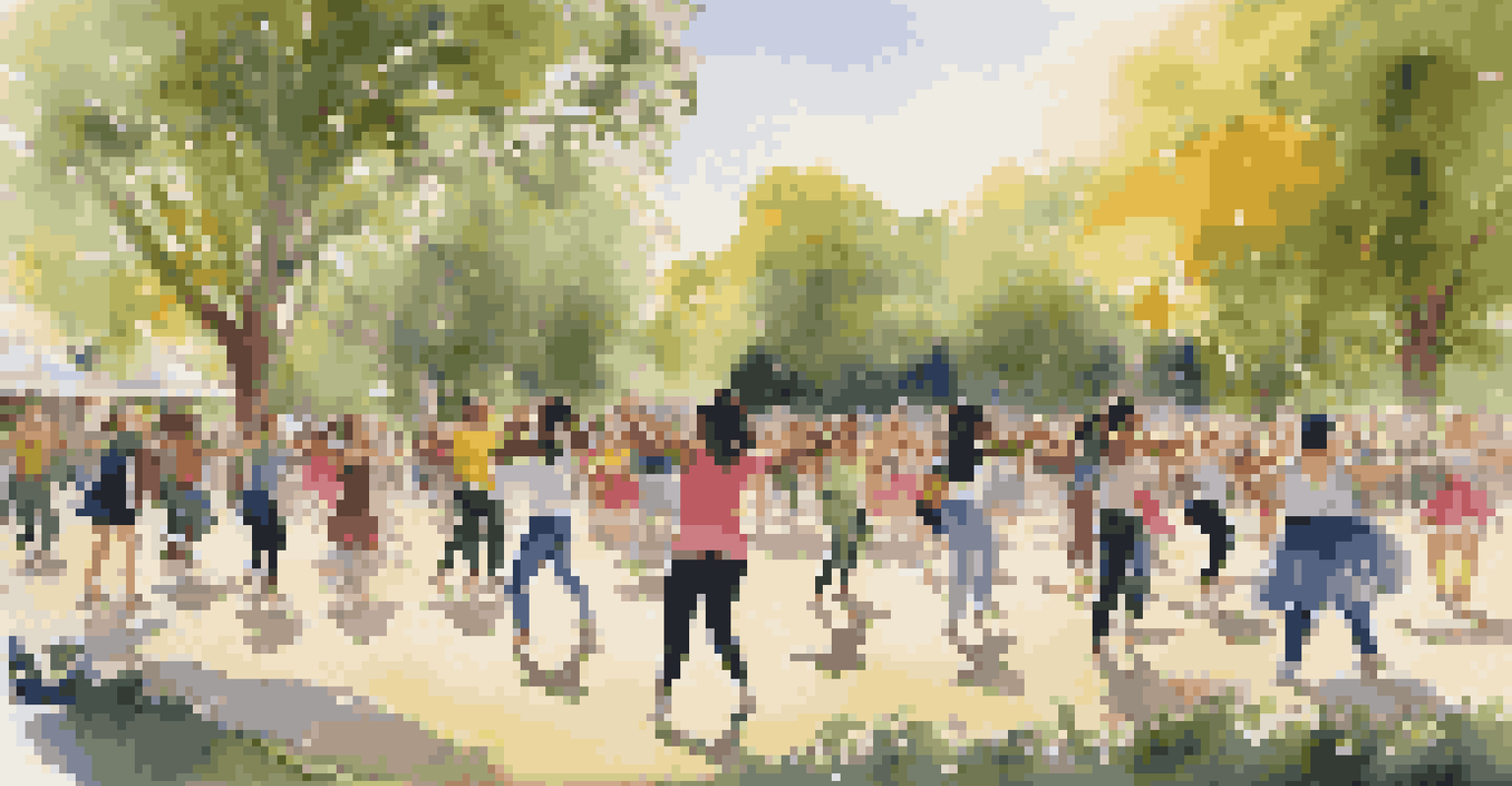The Future of Dance Criticism in a Digital Age

The Evolution of Dance Criticism in a Digital Landscape
Dance criticism has come a long way from the days of print newspapers and magazines. With the rise of digital platforms, critics now have the power to reach wider audiences instantly. This shift has not only democratized the conversation around dance but has also introduced new voices and perspectives that were previously marginalized.
The internet has been a powerful tool for amplifying diverse voices and perspectives in the arts.
As more people engage with dance through social media and online publications, traditional critics are adapting their approaches. They are embracing digital tools to enhance their storytelling, incorporating videos, interviews, and interactive elements. This evolution reflects a broader trend in arts criticism, where immediacy and accessibility are becoming paramount.
In this new landscape, critics must navigate the complexities of digital engagement while maintaining their credibility. The challenge lies in balancing personal expression with informed analysis, ensuring that the dialogue around dance remains rich and nuanced.
The Role of Social Media in Dance Criticism
Social media platforms like Instagram and TikTok are reshaping how we experience and critique dance. Critics and audiences alike can share performances in real-time, creating a dynamic conversation that extends beyond the theater. This immediacy allows for spontaneous reactions and discussions that were previously limited to post-performance reviews.

However, the rapid pace of social media also poses challenges for critics. The pressure to be the first to share insights can sometimes lead to superficial analysis, where depth is sacrificed for speed. Critics must find a balance between engaging with audiences quickly and providing thoughtful, well-rounded critiques.
Digital Shift in Dance Criticism
The evolution of digital platforms has democratized dance criticism, allowing diverse voices to emerge and engage wider audiences.
Moreover, social media has given rise to 'micro-critics'—enthusiasts who share their opinions widely. While this can enrich the discourse around dance, it also raises questions about authority and expertise in criticism. As the lines blur, traditional critics must find ways to assert their unique perspectives.
New Platforms and Formats for Dance Criticism
With the advent of digital platforms, dance criticism is no longer confined to written reviews. Critics are now exploring diverse formats, including podcasts, video essays, and even virtual reality experiences. These innovative approaches allow critics to engage audiences in new ways, making the art form more accessible and relatable.
Criticism is a dialogue, not a monologue; it should invite participation and reflect the community it serves.
For instance, a podcast discussing the nuances of a recent performance can provide a more personal touch, allowing listeners to grasp the emotional context behind the dance. Similarly, video essays can visually analyze choreography, breaking down movements frame by frame for clarity. These formats invite audiences to engage with dance on a deeper level.
As technology continues to evolve, the potential for new formats is limitless. Critics who embrace these changes can help shape the future of dance criticism, ensuring it remains relevant and resonant in our increasingly digital world.
The Importance of Inclusivity in Dance Criticism
Inclusivity is a vital consideration in the evolving landscape of dance criticism. As diverse voices emerge, it's crucial that critics reflect the rich tapestry of cultural backgrounds and experiences present in dance today. This inclusivity not only enriches the dialogue but also ensures that marginalized stories are heard and valued.
Critics must actively seek out and amplify underrepresented voices within the dance community. By prioritizing diverse perspectives, we can challenge the traditional narratives that have dominated criticism for decades. This shift can lead to a more holistic understanding of dance as an art form that transcends boundaries.
Social Media's Impact on Critiques
Social media is reshaping dance criticism by enabling real-time discussions, but it also challenges critics to maintain depth in their analysis.
Moreover, embracing inclusivity can foster a sense of belonging among audiences. When people see themselves reflected in dance criticism, they are more likely to engage with the art form. This connection can inspire new generations of dancers and critics alike.
Challenges for Traditional Critics in the Digital Age
As dance criticism evolves, traditional critics face unique challenges in adapting to a digital-first world. One significant hurdle is the need to establish their authority amidst a flood of opinions shared online. With everyone having a platform, standing out while maintaining credibility becomes increasingly complex.
Additionally, critics must navigate the fast-paced nature of digital media, where the lifespan of a review can be fleeting. Unlike print publications that offered lasting critiques, online reviews often get buried under an avalanche of new content. This constant churn can lead to a feeling of impermanence in the critical discourse.
To thrive in this environment, traditional critics must develop skills in digital storytelling and audience engagement. By embracing these changes, they can carve out a space for informed critique that resonates with contemporary audiences.
Engaging Audiences Through Interactive Criticism
Interactive criticism is an exciting development in the realm of dance, allowing audiences to engage directly with critiques. This could take the form of live-streamed discussions, Q&A sessions, or even interactive reviews where audiences can share their thoughts in real time. Such engagement fosters a sense of community and encourages deeper conversations about the performances.
By inviting audiences to participate, critics can gain insights that enhance their own understanding of the work. This collaborative approach not only enriches the dialogue but also empowers audiences to feel more invested in the dance community. Everyone's voice matters, creating a more inclusive environment.
Emphasis on Inclusivity
Inclusivity in dance criticism is essential for reflecting diverse experiences and ensuring that marginalized stories are heard and valued.
As technology continues to evolve, the potential for interactive criticism will expand. Critics who embrace this trend can create dynamic platforms where the conversation around dance thrives, ensuring that it remains vibrant and relevant.
The Future Vision: Where Dance Criticism is Headed
Looking ahead, the future of dance criticism is poised to be more inclusive, interactive, and diverse. As digital platforms continue to evolve, critics will have even more opportunities to engage with audiences and share their insights. This transformation holds the potential to create a richer, more vibrant discourse around dance.
Moreover, as the dance community grows increasingly global, critics can expand their horizons by exploring international perspectives. This broadened view can lead to a deeper appreciation of different styles and cultural expressions, enriching the overall conversation about dance.

Ultimately, the future of dance criticism will depend on the ability of critics to adapt and innovate. By embracing change and prioritizing inclusivity, the field can continue to thrive, ensuring that the beauty of dance is celebrated and critiqued in meaningful ways.